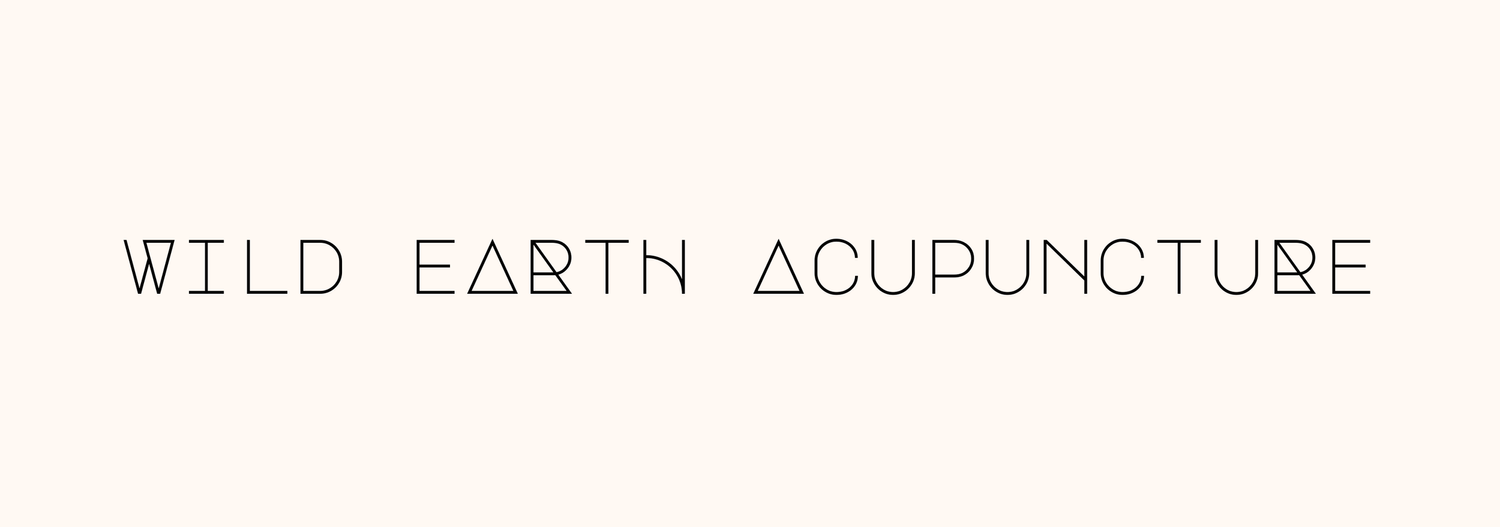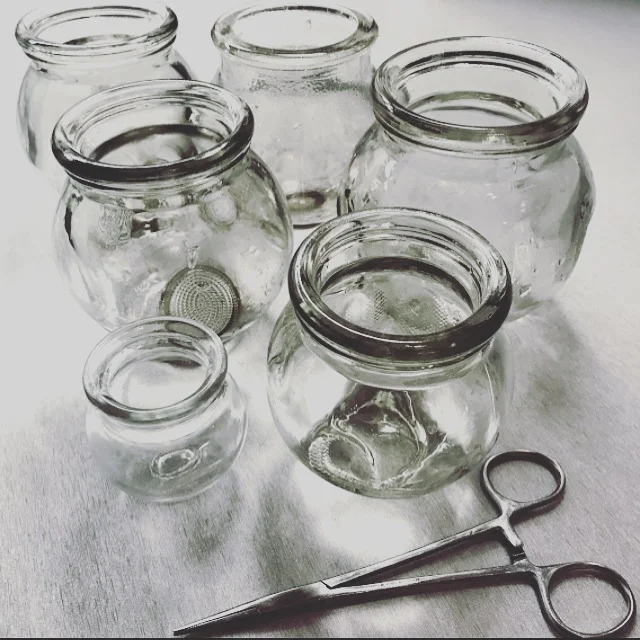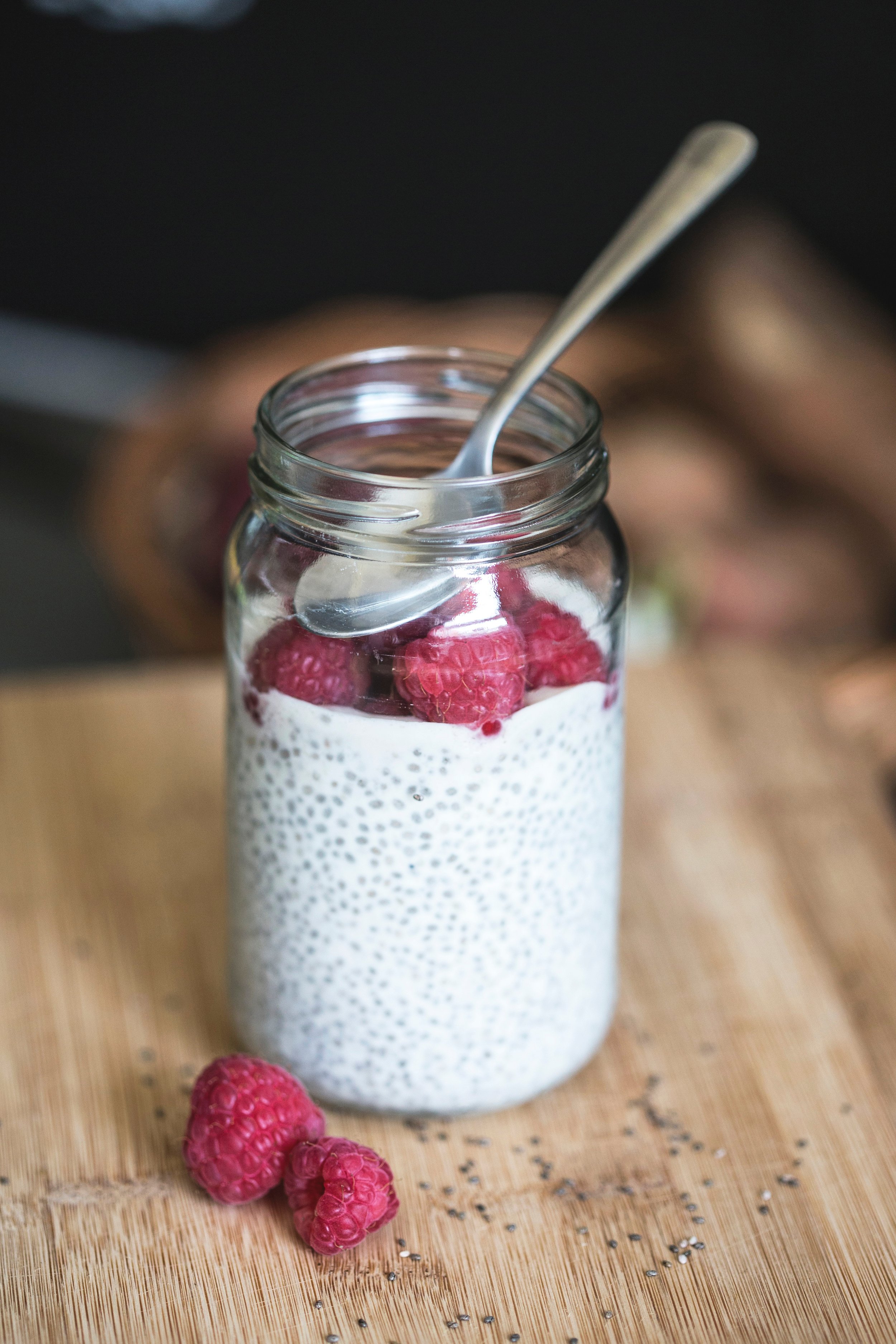Natural Headache Solutions from Traditional Chinese Medicine
Natural Headache Solutions; Acupressure, Essential Oils, Teas and More
Are you tired of reaching for over-the-counter pain relievers every time a headache strikes?
Traditional Chinese Medicine offers an in-depth explanation of the causes and types of headaches that you might be experiencing, and this knowledge can help you gain insight into why you are getting headaches and possible solutions to deal with them. In this article, we will categorize the types of headaches you may be experiencing as well as dive into the art of acupressure, calming essential oils, and the soothing benefits of herbal teas for a holistic approach to headache relief.
When it comes to headaches, Traditional Chinese Medicine (TCM) provides a unique perspective that goes beyond just identifying specific underlying causes. TCM focuses on a more comprehensive classification based on how and where headaches manifest in the body. Certain conditions, such as phlegm-dampness, Qi and Blood deficiency, Qi and Blood stagnation, or Liver fire, are all part of these underlying causes but are just a piece of the puzzle. A common categorization is naming whereupon the head the headaches manifests and links it to Organ systems and specific pathologies, for this we use the ancient Shang Han Lun categorizations.
Western Biomedical science also categorizes headaches into distinct categories. The main three are tension-type headaches, migraines, and cluster headaches. (Sinus headaches can also be considered a fourth.) Headaches can also indicate more serious conditions, so it is important to check in with your healthcare provider if they are persistent.
Tension-Type Headaches
Tension headaches, the most prevalent type of primary headaches, are characterized by a persistent sensation of ache or pressure encircling the head, particularly at the temples or the back of the head and neck. Unlike migraines, tension headaches are typically less severe and seldom induce nausea or vomiting. They tend to rarely disrupt daily activities and are not hereditary. Notably, women, especially in adulthood, are twice as prone to experiencing tension headaches compared to men. Some common causes of tension headaches may be bad posture, overactivity, stress, anxiety, fatigue, or low iron levels. These mild to moderate headaches can come with associated symptoms such as pain that radiates from the upper back, neck, and shoulders, above the eyes, and around the ears, a pulsing sensation, trouble sleeping, fatigue, irritability, trouble focusing, and mild sensitivity to light or noise.
Migraines
Migraines are characterized by intense throbbing pain or a pulsating sensation, typically localized to one side of the head. These episodes are frequently accompanied by symptoms such as nausea, vomiting, and heightened sensitivity to light and sound. Onset commonly occurs during puberty, with the severity peaking in middle age. There is often a familial predisposition, with women being three times more susceptible to migraines compared to men. The causes of migraine are unknown but they are often impacted by hormonal changes, food sensitivities, stress, sensory stimuli, and changes in wake-sleep patterns. Some symptoms of migraines may be a headache that lasts from 4 to 72 hours if untreated, pain on one side or both sides of the head that feels throbbing or pulsing, sensitivity to light, sounds, and sometimes smells, nausea and vomiting, blurred vision, lightheadedness or fainting.
Cluster Headaches
Cluster headaches, acknowledged as one of the most agonizing types, have an unknown origin, potentially linked to environmental, emotional, or genetic factors. These headaches often manifest abruptly, waking individuals in the middle of the night with severe pain concentrated around one eye on a single side of the head. While rare, it's important to note that cluster headaches are not life-threatening. They may manifest as excruciating pain around one eye but may radiate to other areas of the face, head, neck, and shoulders, restlessness, tearing, redness or swelling of the eye, stuffy or runny nose, forehead, or facial sweating, or flushing on the face.
Sinus Headaches
Sinus headaches arise from sinusitis, an infection in the sinuses, leading to sensations of pressure or pain around the eyes, cheeks, and forehead. It's crucial to note that individuals experiencing headaches due to sinusitis might also concurrently have migraines or tension headaches. Hence, a careful and distinct diagnosis is necessary to differentiate between these various types of headaches. Sinuses within the forehead, cheekbones, and behind the nose bridge are air-filled cavities. Inflammation, often triggered by allergies or infections, causes swelling and increased mucus production. This inflammation can lead to blockages in the channels responsible for draining the sinuses. Sinusitis is usually caused by a viral upper respiratory. It can show up with thick mucus, decreased sense of smell, and pain in one cheek, upper teeth, or forehead. Sinus headaches can also have pain, pressure, and fullness in the cheeks, brow, or forehead, with worsening pain if you bend forward or lie down, a stuffy nose, fatigue, an achy feeling in your upper teeth, with possible little nausea or vomiting or aggravated by noise or bright light.
How Does Traditional Chinese Medicine View Headaches?
A comprehensive understanding of headaches within TCM traces its roots to the principles outlined in the Shang Han Lun, a foundational text in Chinese medicine. This ancient treatise, attributed to Zhang Zhongjing, provides a systematic approach to differentiating and treating diseases. Within the Shang Han Lun, headaches are not merely viewed as isolated symptoms but are intricately linked to the broader framework of the body's internal balance and external pathogenic factors.
The differentiation methodology outlined in the Shang Han Lun allows headaches to be categorized based on various patterns and their corresponding imbalances, whether related to their sinew channels, Qi stagnation, or other underlying factors. By learning this perspective, headache treatments can be tailored to address the root cause, promoting a comprehensive and personalized approach to restoring harmony within the body.
The Shang Han Lun serves as a comprehensive guide, offering valuable insights into the intricate web of connections between headaches and an individual's overall health in Traditional Chinese Medicine. It breaks down imbalances into 6 specific patterns, each with its own set of signs and symptoms and tongue and pulse diagnoses. The Six Stages theory in the Shang Han Lun is also closely associated with specific channels or areas of the body. Each stage reflects the progression of a pathogenic influence through different levels, and these levels are connected to specific channels or areas. TCM often categorizes headaches into 4 distinct categories (Tai yang, Yang-ming, Shao yang, and Jue yin).
Tai Yang
Yang Ming
Shao Yang
Tai Yin
Shao Yin
Jue Yin
Distinct categorizations of diseases and imbalances in TCM, not specific to headaches, according to the Shang Han Lun.
Tai Yang- Occipital Headache
One intriguing category of headaches is the Taiyang headache, characterized by a remarkable overlap with tension headaches. These headaches exhibit tightness, often accompanied by neck and shoulder pain, and follow the path of the Taiyang sinew channels – namely, the Bladder and Small Intestine. The tension associated with Taiyang headaches can be felt creeping from the back up the neck and around the head, particularly at the back of the head. This connection may align with the weakness or tightness of extensor muscles observed in tension headaches from a biomedical standpoint, suggesting a reflection of Taiyang sinew weakness.
The Tai Yang headache, commonly situated at the back of the head in the occipital area, extending to the neck and shoulders, embodies distinctive patterns in TCM – typically associated with either wind-cold or wind-heat. Palpating the pulse reveals characteristics of a floating or a tight pulse, while a visual inspection of the tongue may present a pale or red appearance. This particular headache type aligns with various conditions, such as tension headaches, spinal headaches, and those accompanying cold or flu symptoms. Recognizing these TCM patterns not only aids in precise diagnosis but also informs targeted therapeutic approaches, offering a holistic perspective on addressing the diverse manifestations of head discomfort associated with the Tai Yang headache.
Taiyang headaches are cold in nature and respond well to warming therapies. TCM emphasizes the importance of warming interventions for Taiyang headaches, such as hot showers, heat packs, warming herbs like cinnamon, ginger, and formulas such as Gui Zhi Tang.
Formula Highlight- Qiang Huo Fang Feng Tang
Shao Yang- Temporal Headache
The Shao Yang headache manifests as pain along the side of the head, spanning the temporal area, the root of the ears, and the hairline on the sides. This unique headache is characterized by alternating sensations of cold and heat and additional discomforts like chest tightness, a bitter taste in the mouth, and episodes of dizziness. In the realm of Traditional Chinese Medicine (TCM), this headache is associated with specific patterns, namely liver fire flaring up and the stagnation of heat in the liver channel. A thorough examination reveals a long and thin pulse, indicative of the underlying conditions, while the tongue exhibits a red hue with a thin yellow coat. The Shao Yang headache transcends conventional classifications, aligning with various types such as migraine headaches, tension headaches, and cluster headaches.
Formula Highlight- Xiao Chai Hu Tang Modified
Yang Ming- Frontal Headache
The Yang Ming headache, localized in the frontal region encompassing the forehead and eyebrows, presents a distinct set of sensations commonly described as a feeling of heat, red eyes, and fever. In Traditional Chinese Medicine (TCM), this headache is associated with specific patterns, namely wind, cold, and damp heat, with identifiable diagnostic indicators. Tongue examination may reveal a yellow and dry or white coating, while the pulse is characterized as either big and forceful or floating and fast, indicative of a true heat pattern. This type of headache aligns with various health conditions, particularly sinus headaches and those accompanying cold or flu symptoms.
Formula Highlight- Bai Hu Tang Modified
Jue Yin- Vertex Headache
The Jue Yin headache, centered primarily at the pinnacle of the head and in the eye region, presents a unique array of symptoms, including an inclination to vomit without successful expulsion and episodes of spitting white foam accompanied by persistent dizziness. Within the framework of Traditional Chinese Medicine (TCM), this headache is attributed to the stagnation of liver qi. Characteristic diagnostic indicators include a slow, thready, and stringy pulse and a white and slippery fur on the tongue. The Jue Yin headache transcends conventional classifications, correlating with diverse conditions such as migraines, concussions, cluster headaches, seizures, and tension headaches.
Formula Highlight- Wu Zhu Yu Tang Modified
Natural Approaches for Headache Relief
In a world where the pace of life can often lead to stress, tension poor posture, and even worse diets, headaches have become a common ailment for many individuals. While over-the-counter medications may offer temporary relief, the growing interest in natural remedies for headaches presents a compelling alternative. Natural solutions such as herbs, lifestyle adjustments, and holistic practices address the root causes of headaches, providing a sustainable and side-effect-free approach to managing this prevalent discomfort.
From herbal teas and essential oils to acupuncture and mindfulness techniques, these remedies not only offer relief from headache symptoms but also aim to promote overall well-being. This shift towards natural interventions reflects a desire for a more harmonious and gentle approach to healthcare, acknowledging the intricate connection between mind, body, and the environment in achieving lasting relief from headaches.
Acupressure for Headache Relief
Acupressure, an ancient healing technique rooted in Traditional Chinese Medicine, involves applying pressure to specific points on the body to stimulate energy flow. Here are some acupressure points renowned for relieving headaches. Incorporate these acupressure techniques into your routine by applying gentle pressure for 2-3 minutes on each point. Consistency is key for optimal results.
Celestial Pillar (BL 10)
Located at the base of your skull, on either side of the spine, massaging these points can alleviate tension headaches, promote relaxation, and alleviate neck pain and tension. Acupressure here can also help eye pain, and neck strains and improve the range of motion in the neck and shoulders.
Yin Tang
Found between the eyebrows, this point is believed to reduce headaches, eye strain, and sinus congestion. Apply gentle pressure and massage in a circular motion.
Bamboo Gathering (B2)
Located at the indentation on the inner corners of your eyes, in the medial extremity of the eyebrow, on the supraorbital notch. Massaging these points can help reduce eye strain and headaches caused by tension. It is a major point for eye health, it can treat many eye symptoms such as itching, redness, swelling, and pain of the eye as well as twitching of eyelids.
Union Valley (LI4)
Situated in the webbing between your thumb and index finger, stimulating this point may relieve tension headaches and migraines. Use your thumb and index finger to apply steady pressure.
Guasha
This traditional therapy involves scraping the skin with a smooth-edged instrument, typically made of stone, jade, or other materials, to stimulate blood circulation and promote the body's natural healing process. When applied to specific acupressure points on the head and neck, Guasha is believed to alleviate tension and congestion, addressing the root causes of headaches. The gentle scraping motion of Guasha helps release muscle tension, reduce inflammation, and improve blood flow to the affected areas. This, in turn, may contribute to the relief of headaches caused by stress, muscle tightness, or poor circulation. Guasha is thought to enhance the flow of Qi along the body's meridians, restoring balance and promoting overall well-being. It's essential to note that while Guasha may offer relief for some individuals, it's not a one-size-fits-all solution, and results can vary.
Herbal Teas
Tea is pretty much my answer to most questions of ways to bring more balance to the body. Tea is a really easy way to experience the therapeutic properties of herbs. They are great for children and adults. Here are some teas renowned for their headache-relieving properties:
Peppermint Tea
Known for its soothing properties, peppermint tea can help relax the muscles and ease tension headaches. Its refreshing flavor adds an enjoyable twist to your relaxation routine.
Ginger Tea
With its anti-inflammatory and analgesic properties, ginger tea may reduce headaches caused by inflammation. Add a slice of fresh ginger or use ginger tea bags for a quick remedy.
Chamomile Tea
Renowned for its calming effects, chamomile tea can help alleviate stress and tension headaches. Sip on a warm cup before bedtime to promote restful sleep and wake up headache-free.
Lavender Tea
A fragrant herbal tea, lavender can have relaxing effects, making it beneficial for relieving headaches induced by stress. Steep dried lavender flowers for a delightful and aromatic tea.
Feverfew Tea
Widely used in traditional medicine, feverfew is known for its potential to reduce the frequency and intensity of migraines. Brew a cup and enjoy the potential benefits of this herbal remedy.
Essential Oils
Essential oils are another great headache solution. They can be diluted with a carrier oil and used topically, or within a diffuser to fill the room around you with their soothing scents. Aromatherapy is the name of the use of essential oils to enhance well-being, often includes oils with known calming and analgesic properties. Peppermint oil, renowned for its soothing menthol aroma, is commonly used to alleviate tension headaches by promoting muscle relaxation and improving blood flow. Lavender oil, celebrated for its calming scent, is believed to ease stress and tension, potentially reducing the frequency and severity of headaches. Inhalation or topical application of these essential oils, either individually or in combination, can provide a pleasant and holistic approach to headache relief. While individual responses may vary, many people find comfort in incorporating essential oils into their self-care routines as a complementary strategy for managing headaches.
Peppermint
Rosemary
Lavender
Chamomile
Eucalyptus
Lifestyle Modifications
Combining the power of acupressure, herbal teas, guasha, and essential oils for a holistic approach to headache relief. Start by incorporating acupressure into your daily routine, dedicating a few minutes to massage the designated points. Follow this up with a calming cup of herbal tea to enhance the relaxation process. Experiment with different acupressure points and herbal teas to find the combination that works best for you. Consistency is crucial in reaping the full benefits of these natural remedies, so make these practices a regular part of your self-care routine. If headaches are persistent or debilitating make sure to check in with a well-versed healthcare practitioner to make a plan.
Say goodbye to headaches and hello to a healthier, more balanced you.
Want To Learn More?





































These foundational books offer a clear and accessible path into the world of Acupuncture and Chinese Medicine. Whether you're studying to become a practitioner or simply curious about the theory behind the treatments, these titles will deepen your understanding and appreciation for this ancient healing system—one thoughtful page at a time.